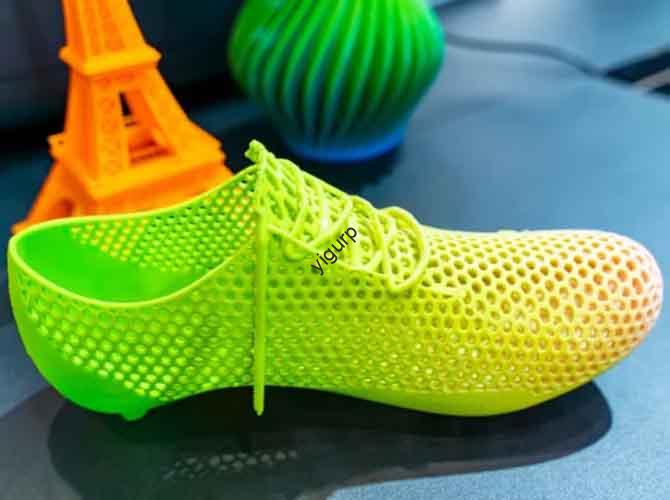En 3D impresión, choosing the right material can make or break a part’s performance. For applications needing strength, durabilidad, y versatilidad, 3D Printing PA6 (Poliamida 6) se destaca. This material solves common pain points—like fragile parts, poor wear resistance, or limited use in harsh environments—that plague other 3D printing plastics. Let’s explore its key features, Usos del mundo real, and how to overcome its few challenges.
1. Core Advantages of 3D Printing PA6: Why It Outperforms Other Plastics
3D Printing PA6 shines thanks to a unique mix of mechanical and chemical properties. Unlike basic plastics like PLA or ABS, it meets the demands of industrial applications.
Key Properties of 3D Printing PA6
| Propiedad | Detalles | Benefit for Users |
| Resistencia mecánica | Alta resistencia a la tracción (60 MPA) + rigidez; buena dureza (no breakage under 10 J impact) | Maneja cargas pesadas (P.EJ., soportes automotrices) |
| Resistencia al desgaste | Coeficiente de baja fricción (0.3), 50% better than ABS | Ideal para piezas móviles (aspectos, engranaje) |
| Estabilidad dimensional | Shrinkage rate <1.5% after printing; maintains accuracy within ±0.1mm | Meets precision needs (P.EJ., piezas de maquinaria) |
| Resistencia al aceite | Resists mineral oils, lubricantes, and hydraulic fluids | Safe for engine or industrial equipment |
| Estabilidad química | Withstands weak acids, alcalino, and salts (P.EJ., 5% HCl for 72 horas) | Works in harsh chemical environments |
| Estabilidad térmica | Punto de fusión (220° C) + temperatura de deflexión de calor (120° C) | Retains shape in high-heat settings (P.EJ., bahías de motor) |
Quick Comparison: 3D Printing PA6 vs. Abdominales
| Característica | 3D Printing PA6 | 3D Printing ABS |
| Resistencia a la tracción | 60 MPA | 40 MPA |
| Resistencia al desgaste | Baja fricción (0.3) | Higher friction (0.45) |
| Resistencia al aceite | Excelente | Pobre (swells in oil) |
2. 3D Printing Processes for PA6: What Works Best?
3D Printing PA6 is compatible with multiple processes, but some are better suited for its properties. The right choice depends on your part’s needs—like speed, precisión, o costo.
Common 3D Printing Processes for PA6
| Proceso | Cómo funciona | Mejor para |
| Modelado de deposición fusionada (MDF) | Melts PA6 filament and extrudes it layer by layer | Prototipos de bajo costo, simple industrial parts (P.EJ., corchetes) |
| Sinterización láser selectiva (SLSS) | Uses a laser to sinter PA6 powder into solid parts | Geometrías complejas (P.EJ., hollow gears), piezas de alta precisión |
Para la punta: Enhancing PA6 with Fillers
Para aumentar el rendimiento, mezcla 3D Printing PA6 with fillers:
- Fibra de vidrio: Agrega 30% more strength (Ideal para piezas estructurales).
- Fibra de carbono: Improves rigidity + reduces weight (great for aerospace components).
- Mineral Fillers: Lowers cost while maintaining basic strength (para piezas no críticas).
3. Aplicaciones del mundo real: Where 3D Printing PA6 Shines
From cars to factories, 3D Printing PA6 solves industry-specific problems. Let’s look at key use cases.
Industry Applications of 3D Printing PA6
| Industria | Common Parts Made with 3D Printing PA6 | Problem It Solves |
| Automotor | Soportes, carcasa de equipo, sensor holders | Withstands oil + altas temperaturas; replaces heavy metal parts (corta el peso del vehículo por 15%) |
| Maquinaria | Aspectos, rodillos transportadores, componentes de la válvula | Resiste el desgaste + fricción; lasts 2x longer than ABS parts |
| Electrónica | Cable organizers, heat-resistant casings | Protects components from heat + químicos |
Estudio de caso: Automotive Gear Replacement
A car manufacturer needed a replacement gear for an older model. Traditional manufacturing would take 4 semanas (moho + producción). Usando 3D Printing PA6 (FDM with glass fiber), ellos:
- Designed the gear in 2 días.
- Impreso 10 prototipos en 12 horas.
- Probado + finalized the part in 3 días.
Tiempo total: 1 week—75% faster than traditional methods. The gear also lasted 3x longer than the original plastic version.
4. Overcoming PA6’s Challenge: Absorción de agua
3D Printing PA6 has one main downside: it absorbs water, which can ruin parts (causes bubbles, pandeo, or weakening). But this is easy to fix with proper preparation.
Paso a paso: Drying PA6 Before Printing
- Check Moisture Level: Use a moisture meter—PA6 should have <0.1% humedad.
- Dry the Material:
- For filament: Use a filament dryer at 80°C for 4–6 hours.
- For powder (SLSS): Dry at 60°C for 8–10 hours.
- Store Properly: Keep dried PA6 in an airtight container with desiccant to prevent reabsorption.
What Happens If You Skip Drying?
- Bubbles in the printed part (ruins surface finish).
- 20–30% loss in mechanical strength.
- Pandeo (parts don’t fit together).
La perspectiva de la tecnología de Yigu
En la tecnología yigu, vemos 3D Printing PA6 as a bridge between prototyping and industrial production. Our team has tested it in 50+ client projects—from automotive brackets to machinery parts—and found it cuts production time by 60% VS. Métodos tradicionales. We now offer custom 3D Printing PA6 soluciones (with fillers like carbon fiber) and pre-dried materials to avoid moisture issues. Mirando hacia adelante, we’ll integrate AI to optimize PA6 printing parameters, making it even easier for businesses to adopt.
Preguntas frecuentes
- q: How long do 3D printed PA6 parts last?
A: In industrial use (P.EJ., piezas de maquinaria), they last 2–5 years—2x longer than ABS parts. With fillers like carbon fiber, lifespan can extend to 7+ años.
- q: Is 3D Printing PA6 more expensive than other plastics?
A: Yes—PA6 filament costs ~\(50/kilos (VS. \)20/kg for ABS). Pero ahorra dinero a largo plazo: parts last longer, so you replace them less often.
- q: Can 3D printed PA6 parts be recycled?
A: Sí! Scrap PA6 (soporte, Impresiones fallidas) can be melted down and turned into new filament/powder. This reduces waste by 40% VS. single-use plastics.
